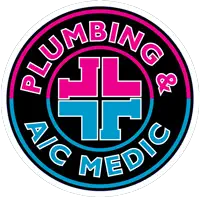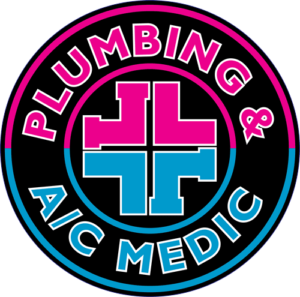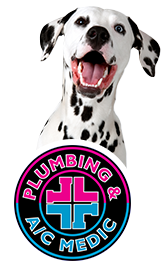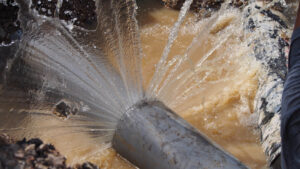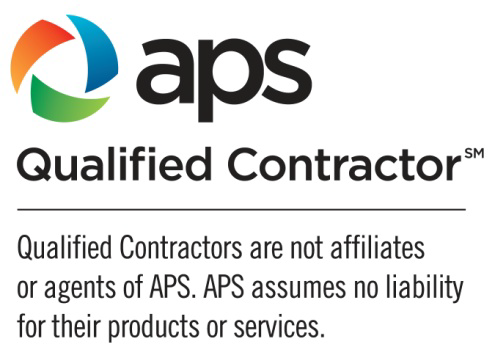When it comes to the sewer systems of older homes, there’s one type of pipe that stands out due to its distinctive characteristics: Orangeburg pipes. These pipes were commonly used in the mid-20th century but are now notorious for their susceptibility to deterioration and damage.
So, how do you know if you have these pipes in your home? What does an orangeburg pipe look like? Below, we’ll delve into how to identify Orangeburg pipes and shed light on what makes them unique.
Understanding Orangeburg Pipes
Before we can discuss how to identify Orangeburg pipes, it’s important to know why they were used in homes in the first place. So, why were they invented?
Orangeburg pipes, also known as bituminous fiber pipes, were widely used as sewer pipes in the United States during and after World War II, especially from the 1940s to the early 1970s. These pipes were made from layers of wood pulp impregnated with coal tar pitch. This composition was intended to make them lightweight and water-resistant, offering an alternative to heavier materials like cast iron.
What Does an Orangeburg Pipe Look Like?
Orangeburg pipes were unique sewer lines; while innovative for their time, they came with inherent vulnerabilities. So, what does an orangeburg pipe look like?
Identifying Orangeburg pipes often starts with their distinct appearance. They typically have a rough, corrugated surface that resembles the texture of cardboard. The pipes are usually dark brown or black in color due to the coal tar pitch used in their manufacturing. When inspecting your sewer line, if you come across pipes that match this description, there’s a possibility that your home has Orangeburg pipes.
Signs of Deterioration
Orangeburg pipes were marketed as a more cost-effective and convenient alternative during their time, but they haven’t aged well over the decades. The wood pulp composition, while initially water-resistant, is prone to degradation over the long term. As a result, Orangeburg pipes are notorious for experiencing collapses, leaks, and other forms of damage.
Tree roots can infiltrate these pipes more easily due to their porous nature, leading to blockages and further exacerbating the deterioration. If you notice recurring sewer line issues or slow drainage, Orangeburg pipes might be the culprit.
Inspecting Your Sewer Line
If you suspect your older home might have Orangeburg pipes, there are a few steps you can take to confirm this:
- Consult Local Records: If your home was built during the period when Orangeburg pipes were commonly used, you can check with your local municipal office or historical records to gather information about the materials used in your home’s sewer system.
- Professional Assessment: Contact a plumbing professional who can conduct a thorough inspection of your sewer line. They have the expertise to identify the type of pipes you have and can recommend the appropriate steps based on their findings.
- Physical Examination: If you have access to a section of your sewer line, carefully examine the pipes for their texture, color, and overall condition. However, keep in mind that digging up sewer lines can be complex and may require professional assistance.
Replacement Options
Identifying Orangeburg pipes involves recognizing their unique appearance and being aware of the signs of deterioration. If your home has Orangeburg pipes and they’re showing signs of deterioration, it’s important to address the issue promptly. While traditional replacement methods involve excavating and replacing the pipes, there are more modern and less invasive options available.
Consider exploring trenchless sewer line replacement methods. These techniques involve minimal digging and can be particularly beneficial if you’re looking to preserve your landscaping and minimize disruption to your property. Plumbing & A/C Medic offers trenchless sewer line replacements near Phoenix, AZ, and beyond.
Contact Our Professional Plumbers Today!
So, what does an Orangeburg pipe look like? How do you identify these sewer lines? As you can see, there are several steps you can take to know if these pipes still exist in your home.
Do you suspect your home has Orangeburg pipes? Call in our plumbing professionals to assess your sewer line’s material and condition. We can provide a definitive answer and recommend the best course of action.
Now that you know how to identify Orangeburg pipes, don’t wait to call Plumbing & A/C Medic. Our plumbers offer a wide range of services to meet your needs. In case of emergencies or serious pipe issues, it’s essential to have access to reliable plumbing solutions. That’s why we’re also proud to offer emergency plumbing services to ensure you’re well-prepared for any unforeseen situations. Contact us today to schedule an appointment!Identifying Orangeburg pipes is crucial for homeowners, especially those with older homes. Learn what Orangeburg pipes look like and how to detect them.
